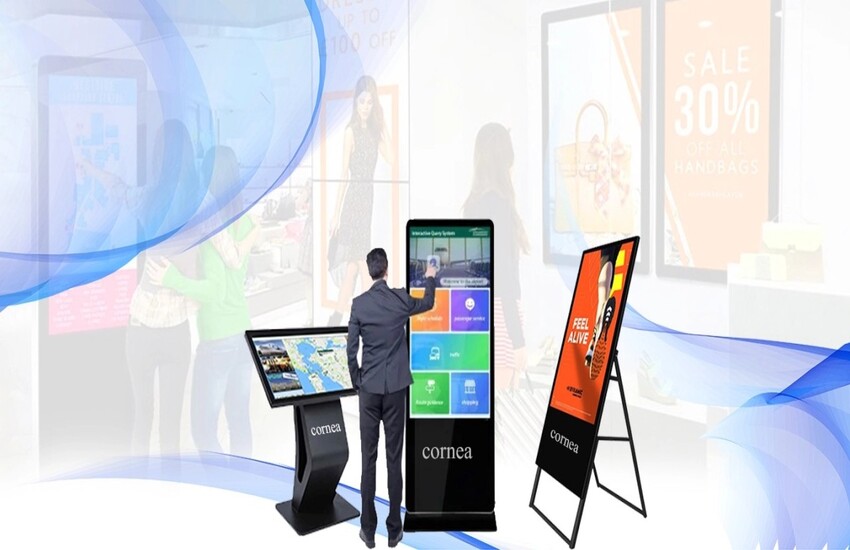A digital signage player is the core device that drives content to your display screens. It takes the digital content, images, videos, live feeds, or web content, and renders it in real time on a screen. Without a signage player, a screen is just a display with no function or flexibility. These players can be hardware-based or software-based and vary in performance, compatibility, and durability. The signage player acts as a bridge between your content management system (CMS) and your display. It processes the content received from the CMS and ensures it appears correctly and smoothly. Whether it’s a retail store, corporate office, or restaurant, the signage player ensures that your content reaches its destination without lag, distortion, or downtime.
Why Reliability in Digital Signage Players Is Crucial
Ensures Uptime and Reduces Technical Glitches
A reliable digital signage player guarantees uninterrupted content display. Downtime or crashes can severely affect the viewer experience, especially in time-sensitive environments like transportation hubs or emergency services. A robust player ensures your screens stay on and deliver real-time updates without interruptions.
Delivers Consistent Performance
Brands must deliver consistent messaging across multiple displays and locations. A reliable signage player ensures uniform playback quality, maintains synchronization for multi-screen setups, and prevents issues like screen tearing or delayed content updates. This consistency is vital for maintaining a professional and engaging visual presence.
Features to Look for in a Dependable Digital Signage Player
Hardware Compatibility and Performance
The best digital signage player should support various display resolutions HD, 4K, and beyond. It must have enough processing power to handle high-quality graphics, animations, and interactive elements. Players built with industrial-grade components perform better in challenging conditions, including high heat, dust, or 24/7 operation.
Remote Management Capabilities
Remote management allows users to troubleshoot, update, and manage multiple displays from a central location. This feature saves time and resources, especially for enterprises with displays across various cities or countries. Look for players that offer remote access, diagnostics, and software updates.
Content Flexibility and Format Support
A good signage player supports a wide range of content types: static images, video loops, real-time social feeds, weather widgets, and more. It should work seamlessly with your CMS, ensuring you can display HTML5 content, dynamic playlists, or schedule content across time zones effortlessly.
How Digital Signage Players Support Different Industries
Retail and QSR (Quick-Service Restaurants)
In retail, players power promotional displays, product highlights, and seasonal campaigns. In QSRs, they update menus, run specials, and display combo offers. Here, real-time responsiveness and the ability to update content remotely is vital for adjusting prices or promotions instantly.
Corporate and Education Sectors
In corporate settings, signage players support employee communications, meeting room schedules, and visitor information. In education, they display event schedules, emergency alerts, and dynamic learning content. Reliable players ensure that the right message reaches the right audience at the right time.
Healthcare and Transportation
Hospitals use signage for patient communications, wayfinding, and health alerts. In transport hubs like airports or train stations, players are responsible for real-time schedules, gate changes, and critical alerts. Reliability in these sectors is non-negotiable due to the time-sensitive nature of the information.
The Pitfalls of Using Unreliable or Cheap Players
Frequent Crashes and Playback Issues
Budget players may appear cost-effective upfront, but often result in unreliable performance. These devices may crash under pressure, display laggy content, or fail to sync across multiple screens, creating a poor user experience and hurting your brand’s image.
Limited Support and Integration
Lower-end signage players may not integrate well with modern CMS platforms or have limited format compatibility. They may lack software updates or technical support, leading to outdated systems that are difficult to manage or troubleshoot.
Scalability Challenges
As your signage network grows, your system needs to scale. Cheap or unreliable players often can’t handle the load of enterprise-level deployments. They may not support 4K playback, multi-zone displays, or remote diagnostics, limiting your digital signage potential.
Best Practices for Deploying Signage Players
Standardize Across Locations
Use the same brand or model of signage player across all your locations to simplify content creation and troubleshooting. This standardization ensures consistency and reduces training or support complexities.
Regularly Update Software and Firmware
Keep your signage player software up to date with the latest patches and improvements. Regular updates enhance performance, security, and compatibility with new CMS features.
Monitor Performance and Analytics
Use analytics tools to track performance metrics like uptime, content playback success, or audience interaction. Reliable players offer insights into content effectiveness and player health, helping you make informed adjustments.
Future Trends in Digital Signage Players
AI and Smart Content Management
Modern signage players are beginning to incorporate artificial intelligence to tailor content based on audience demographics, time of day, or viewer behavior. This personalization enhances engagement and relevance.
Cloud-Based Signage Players
Cloud-integrated players simplify content management, allowing you to update signage from any device, anywhere. Cloud players support advanced scheduling, live data integration, and seamless scalability across multiple displays.
Edge Computing for Faster Processing
Edge computing capabilities in signage players reduce latency by processing data closer to the display source. This technology enables real-time interaction, such as live polling, gesture-based interfaces, or adaptive content that reacts instantly to audience behavior.
How to Choose the Right Digital Signage Player for Your Business
Define Your Needs Based on Usage
Start by understanding your content requirements. Will you be running high-resolution videos? Do you need interactive features? Will the displays run 24/7? Choose a signage player that matches your technical and operational needs.
Consider Long-Term Value Over Initial Cost
Avoid choosing a player solely based on price. Consider the device’s durability, support options, software compatibility, and future-proofing capabilities. Investing in a reliable player upfront reduces downtime, maintenance, and replacement costs.
Evaluate Vendor Support and Warranty
Choose a manufacturer or vendor known for responsive customer support, regular software updates, and a solid warranty. This support ensures you can resolve any issues promptly and maintain continuous operation.
Conclusion
A display screen without a reliable digital signage player is like a stage with no performance. The player drives every visual, every message, and every impression your audience receives. Investing in a dependable signage player is not just about displaying content it’s about ensuring that your communication is effective, professional, and uninterrupted. As digital signage continues to evolve, the reliability and performance of your player will determine how well your brand communicates in a fast-paced, visual-first world.
- Why Every Display Needs a Reliable Digital Signage Player
- Discover why a reliable digital signage player is essential for seamless content delivery, performance, and uptime across all industries.
- digital signage player
Related posts:
 Why KBH Games Is Perfect for Family-Friendly Online Entertainment
Why KBH Games Is Perfect for Family-Friendly Online Entertainment
 High-Quality Biomedical Waste Incinerators & Laboratory Glassware Made in India
High-Quality Biomedical Waste Incinerators & Laboratory Glassware Made in India
 Understanding the Role of IoT in Modern Manufacturing: A Comprehensive Guide to Smart Factories and Industrial Transformation
Understanding the Role of IoT in Modern Manufacturing: A Comprehensive Guide to Smart Factories and Industrial Transformation
 Best Account Management Software for All Businesses – EmizenTech
Best Account Management Software for All Businesses – EmizenTech
 The Role of an ATS in Onboarding: Bridging the Gap Between Offer and Start Date
The Role of an ATS in Onboarding: Bridging the Gap Between Offer and Start Date
 Benefits of AI-powered CCTV Cameras for Business Surveillance
Benefits of AI-powered CCTV Cameras for Business Surveillance
 Top App Development Agency UK – Transforming Ideas into Apps
Top App Development Agency UK – Transforming Ideas into Apps
 Transforming Oil and Gas Operations in Qatar with Microsoft Dynamics 365 Supply Chain Management
Transforming Oil and Gas Operations in Qatar with Microsoft Dynamics 365 Supply Chain Management







